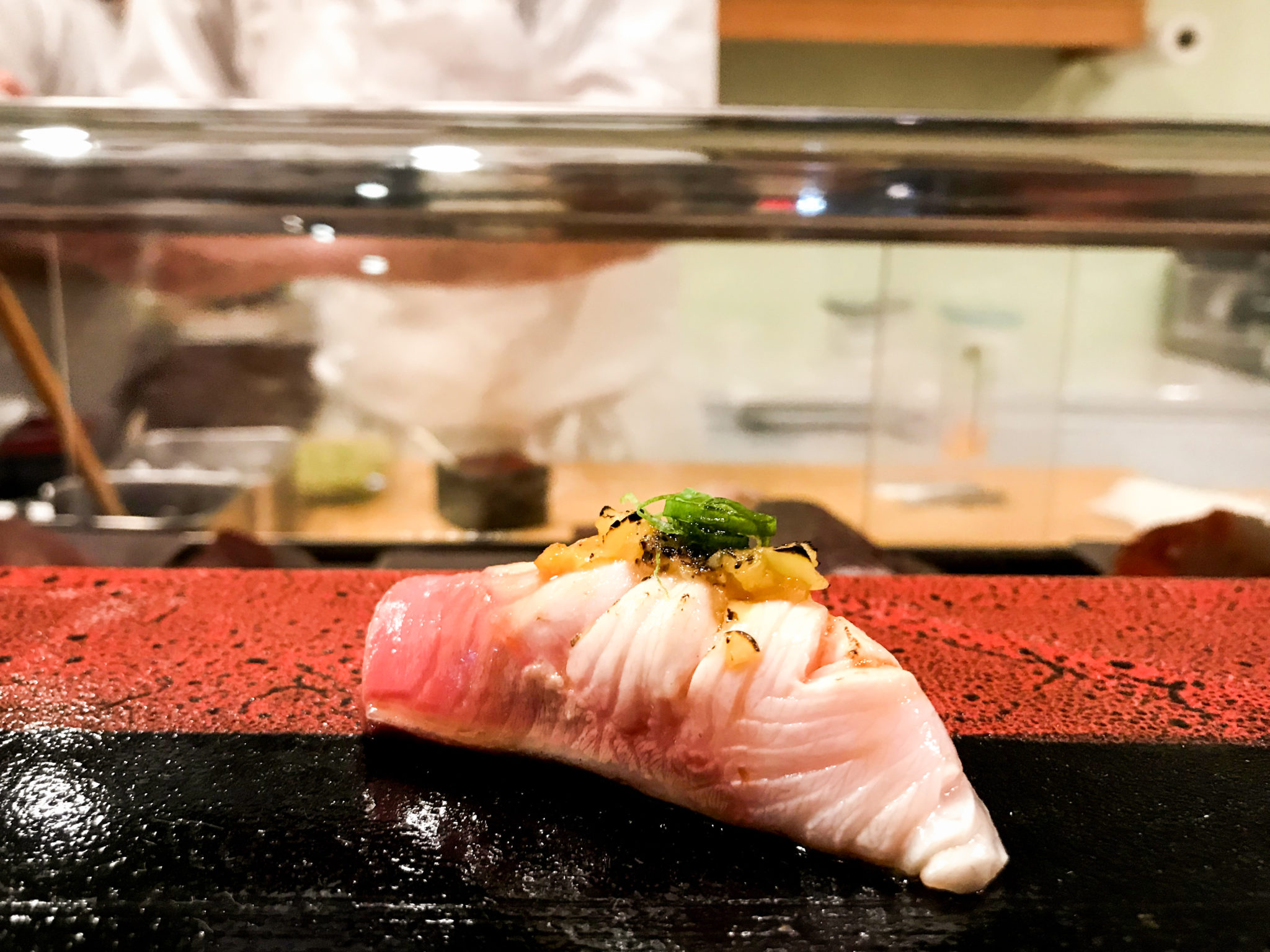
Brandon Liu
Does a good restaurant need a modern design?
I do not often ask myself this question when I finish dining out. Throughout the past nine reviews Brandon and I have written for Bulldog Bites, it has usually followed that the better restaurants have had more creative designs. Otaru Sushi Bar, however, is a restaurant that answers unasked questions for you.
Otaru may disappoint people who expect restaurants to have the swagger and hipness of places like Mecha. I understand them. These days, restaurateurs partner up with branding firms and are bent on making a building whose design attracts you before you even have thought about the food.
Otaru is located underneath Temple Street Parking Garage, by the Temple and George Street intersection. It has a polished black facade like every other restaurant lining the garage.
And when inside, chef Sunny Cheng argues that this visual wow-factor does not matter. His wasabi green walls and the white linen cloth are forgettable. Instead, eyes and ears turn toward the restaurant’s wooden bar, behind which Cheng and his sous-chefs make sushi.
Cheng wants you to notice the fish. Picked up every week from vendors in New York City, the fish lay on the other side of the wooden bar’s glass partition, toward the chefs. The display of gleaming oranges, dark red and fleshy pink indicate the joy of what is to come better than any graphic or unique artifact hanging on the wall.
Cheng wants you to appreciate the sushi making. As soon as you order, let’s say Otaru’s TNT roll, you can look right at the chefs as they cut the delicate slivers of toro, or tuna belly. These slices are then placed on top of rice rolls which the chefs wrap around pickled radishes and scallions. Before handing them over the bar to you, the chef adds a drop of tofu sauce onto each roll.
Throughout the sushi making, Cheng, his other chefs and his wife Kathy, who works the register, make the bar interactive and entertaining. Watching people blowtorch salmon to crispness or carefully press a fingertip’s worth of wasabi into a rice ball can be daunting, but Cheng jumps into or starts any conversation with ease, making it so the bar never goes silent for too long. And when you compliment his restaurant, he blushes as if he were hearing this for the first time.
While I did appreciate the newfound spiciness from the mayo when I dipped my scallop roll into soy sauce, I would advise against using soy sauce. For rolls crafted this carefully, the clean texture of the fish and the way the flavors start off disjointed and then slowly merge together outweighs the benefit soy sauce may add.
And when it comes to “omakase” Otaru makes the soy sauce decision for you. In fact, “omakase” means to respectfully let another decide what is best, so this dinner choice allows the chefs to do all the deciding for you. The sushi that the chefs create almost always deviates from the circular rolls that are traditionally thought of when sushi comes to mind. In place of rice, swordfish, eel, tuna and all other kinds of fish (sometimes the chefs show you a picture book with the fish you are eating) is given the dominant roll, serving as the crater for rice and wasabi. All the herbs and sauces piled on top accentuate the meat and encourage diners to embrace and enjoy raw fish.
Although the full “omakase,” which comes 10 ten pieces of sushi, three types of sashimi and miso soup is unfortunately a $95, Otaru’s smaller 6-sushi “omakase” is $28. Still expensive, but a meal I encourage Yalies to try at some point throughout their time here.
This restaurant is already on the map for New Haven residents. Every night that I dined there the house was full. It is taking Yalies a bit longer to get with the times. Every now and then a group would enter, unaware that Otaru reaches capacity even on weekdays.
Kofi Ansong | kofi.ansong@yale.edu .







